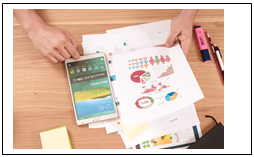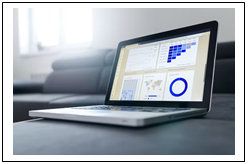 Scott Orlosky has over 25 years of experience in marketing, sales, and application support in a B2B environment. Scott’s career has involved the application of technology solutions to a variety of manufacturing and customer support issues. Scott is passionate about customer service as a strategic core value for business success. Scott Orlosky has over 25 years of experience in marketing, sales, and application support in a B2B environment. Scott’s career has involved the application of technology solutions to a variety of manufacturing and customer support issues. Scott is passionate about customer service as a strategic core value for business success.
|
What to look for in Choosing Accounting SoftwareIf you are running a Small to Medium Enterprise (SME) then the assumption is that you currently have some means to perform at least some basic accounting processes even if it is through do-it-yourself spreadsheets or a home-built database. More likely is that you picked up some off-the shelf accounting package from a name brand retailer. In either case your existing system gives you a starting point to understand what the next iteration of your account software needs to be.
Among other things, good accounting software does for an accountant what a stethoscope does for a doctor. It is a straightforward tool to measure the health of your organization. Most software offering for accounting includes the basics: General Ledger, Invoicing, Time and Expense Management, Analytics, AP/AR Functions and so forth. Other functions that might be available include compatibility with ERP systems, Forecasting, and Connectivity to shipping services like FedEx and UPS. The first step in narrowing your selection should be to survey the software offerings that are available. Most will rate their suitability for use depending on the size of your business, as well as their strongest features. You should independently make a table of the features that would have the most value for you. This, in part, requires you to look ahead for your business. Are you growing, shrinking, diversifying, acquiring? Use the answers to those questions to determine which features would be most important to your company a few years down the road. One thing you don’t want to overlook is If you are in a specific industry, there may be very targeted software that is designed with your specific industry in mind. Examples might include Food Services, Medical Services, Legal or Manufacturing. If you are in an industry that has special accounting rules it may make sense for you to see if there is a software package available that handles your particular concerns. If it’s not obvious, talk to colleagues or the maker of the software package themselves.
Once you have the feature set defined and you have narrowed down your options you will need to decide if you want to contract for the software on a subscription basis (SaaS) or if you want the software to reside on a local server. A local server gives you physical control of the data, both hardware and software. For some companies this translates to peace of mind. However it also means that you will have the responsibility to upgrade hardware, secure the information through a firewall, set up VPN’s (Virtual Private Networks) for employees who need to access data remotely, and perform regular data backups. By comparison, the SaaS subscription models can handle all of the features mentioned above, plus they automatically upgrade software as needed, and are able to stay current with cybersecurity software, hardware upgrades and can even create a virtual private server so that your data is isolated. Some of these features may have additional cost, but they do add convenience. Just to recap:
As you have worked through this process it is important that the various stakeholders are informed as you gather the information. The more people that are part of the process, the better the choice is likely to be. The success of the project depends a lot on buy-in and having a team to help the process along increases the chance of a successful solution. Read other technology articles |

